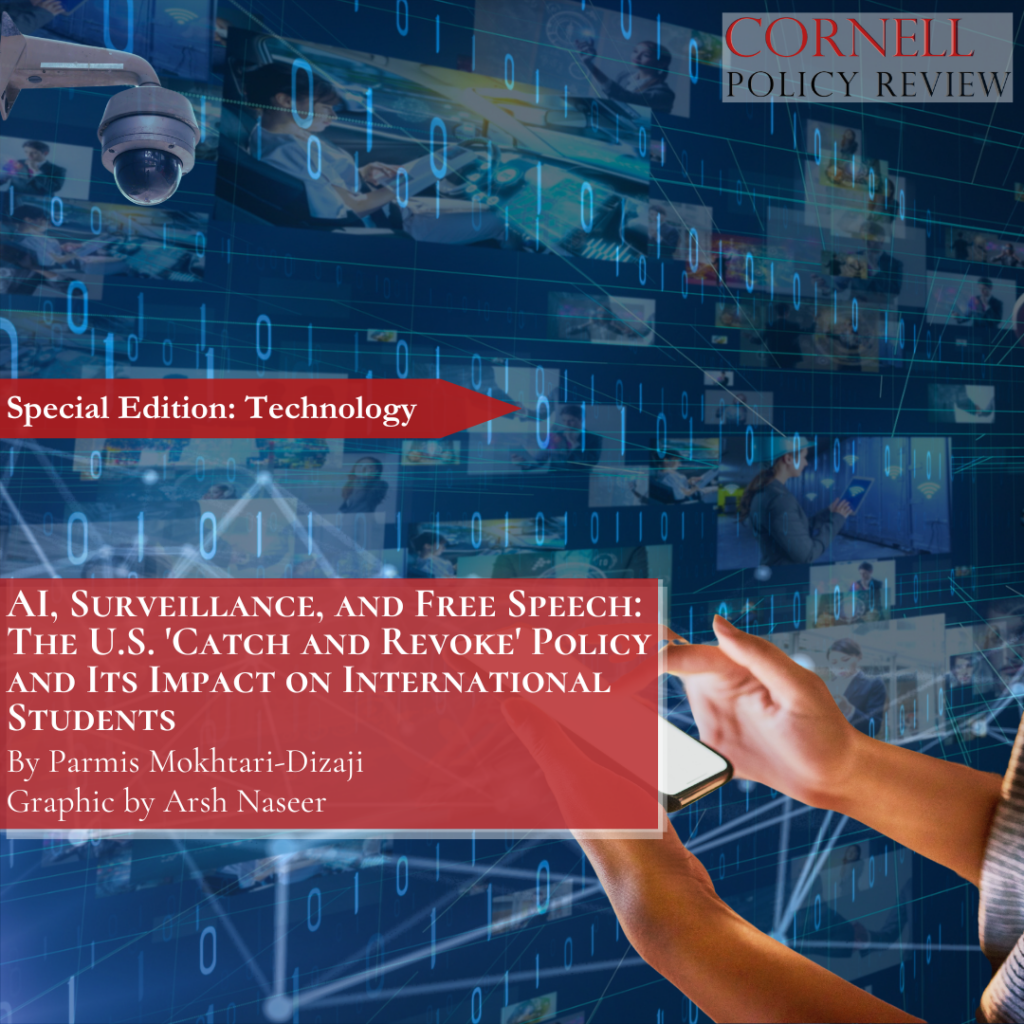By: Camille H. Brady
Edited by: Maddie Miele
In the rapidly evolving landscape of technological innovation, generative artificial intelligence (AI) emerges as a transformative force, bringing with it an unprecedented demand for electrical power. The computational intensity of AI models creates a significant challenge for U.S. energy infrastructure that pushes the boundaries of grid stability and sustainability. In the face of escalating energy instability, industry leaders must ask: What is the most strategic way to ensure long-term economic resilience, minimize environmental disruption, and establish a reliable grid that will fortify U.S. energy independence for the next half-century?
The answer? Nuclear energy.
Why is Generative Artificial Intelligence So Energy-Intensive?
Artificial intelligence models consume extraordinary amounts of electricity due to the complexity of their data processing requirements. In fact, a single prompt on ChatGPT can require nearly ten times more electricity than the most complex Google search.1 In 2023 alone, data centers consumed approximately 4.4 percent of total U.S. electricity, with projections indicating this could escalate between 6.7 and 12 percent by 2028.2
The energy demands of artificial intelligence systems stem from a combination of intensive computational and cooling requirements. During the training phase, models are fed vast datasets to learn patterns and behaviors.3 This is an extremely resource intensive process that requires continuous, round-the-clock operation of graphics processing units, or GPUs.4 These GPUs run at high capacity for extended periods of time, generating significant heat and consuming considerable amounts of electricity.5 Even after training is complete, energy usage remains high, as responding to prompts still relies on powerful GPU processing.6 Compounding this energy burden is the substantial water consumption needed to cool AI-driven data centers. The specialized chips used in AI systems produce far more heat than traditional computing units, requiring advanced cooling infrastructure that often depends on water-intensive strategies.7 Together, the combined energy and water pressures of AI development and utilization pose a serious challenge for building sustainable and environmentally responsible technologies.
U.S. Grid Stability: Let’s Get Down to Brass Tacks
The U.S. electrical grid, while historically reliable, is struggling to keep pace with demand due to its aging infrastructure. The Federal Energy Regulatory Commission predicts there will be a 4.7 percent increase in the demand for electricity within the next five years, which is equivalent to adding ‘another California’ to the national grid.8 Without proper grid rehabilitation, U.S. electricity demand could surpass supply in just two years,9 and it will become increasingly difficult for transmission capacity — the distribution of electricity — to keep up with power generation.10
Load growth — referring to electricity demand — remained relatively stagnant for the past two decades.11 However, this trend is rapidly changing as supply begins to outpace traditional consumption behavior, and it is increasingly difficult to forecast how much electricity is necessary to power this sector of the tech industry. The U.S. Department of Energy anticipates that data center load growth could double or triple by 2028, driven primarily by the expanding landscape of artificial intelligence.12 Renewable energy sources like solar and wind, while crucial for sustainable grid development, cannot independently meet the consistent and wide power demands of artificial intelligence. Solar and wind are inherently intermittent and are therefore unable to meet round-the-clock technology requirements — a limitation that highlights the critical need for a more stable and reliable energy solution.
Nuclear Energy: A Strategic Solution
In response to these mounting challenges, the tech industry is increasingly turning to nuclear energy as a promising alternative. Advanced nuclear technologies, including small modular reactors, microreactors, and non-light water reactors, are rapidly evolving to improve efficiency and address safety concerns.13
Unsurprisingly, tech giants are the ones leading this nuclear energy transition. Google, for example, is partnering with Kairos Power to purchase energy from small modular reactors, with the goal of powering its AI-driven data centers entirely with this technology by 2030.14 Amazon, on the other hand, strategically procured a data center powered by the Susquehanna Steam Electric Station in Pennsylvania, demonstrating their commitment to nuclear energy integration.15 Furthermore, Microsoft’s acquisition and planned reopening of Three Mile Island — site of the worst nuclear accident in U.S. history — further punctuates the industry’s nuclear energy pivot in powering their artificial intelligence.16 Bill Gates also co-founded TerraPower, a nuclear innovation company that develops advanced nuclear technologies, including the Natrium reactor. This reactor put TerraPower on the map as a leader in nuclear energy for its enhanced safety measures, cost-effectiveness, and reliability.17 With growing interest and investment in nuclear power, this is an extremely positive step in the U.S. clean energy transition.
As expected, the appeal of nuclear energy extends beyond mere power generation. It also offers a low-carbon electricity source with minimal greenhouse gas emissions that aligns with the net-zero carbon initiatives of most tech companies.18 Additionally, the recent enactment of the ADVANCE Act of 2024, which passed with bipartisan support, makes investment in advanced nuclear technologies more accessible by streamlining regulatory processes and promoting public-private partnerships in nuclear energy production.19 By reducing administrative barriers and expediting the timeline from inception to completion, investing in nuclear energy is becoming an attractive alternative for tech companies across the country.
Symbiotic Potential: AI and Nuclear Energy
What if artificial intelligence could simultaneously serve the nuclear field — the very source enabling it to operate? Remarkably, the relationship between artificial intelligence and nuclear energy is not unidirectional. In fact, this system that “[mimics] human logic” holds significant promise for streamlining nuclear energy operations and ensuring a stable, uninterrupted electricity supply.20 While machine learning is already being applied within the nuclear energy industry, the integration of more advanced AI technologies offers the potential to elevate operational efficiency to new heights. By analyzing real-time data on consumer demand, weather patterns, and equipment performance, AI can enable smarter decision-making and more responsive adjustments in power generation.21 One especially promising application is the use of digital twins — virtual models that mirror the behavior of physical nuclear systems.22 These simulations allow operators to test scenarios, predict maintenance needs, and optimize system performance without physical intervention, thereby enhancing both safety and reliability.23 Furthermore, AI can revolutionize nuclear security by strengthening radiation detection systems, automating routine tasks, and freeing up human operators to focus on higher-value problems.24 This technological synergy presents an encouraging avenue for advancing both the clean energy transition and artificial intelligence sectors in tandem with one another.
Policy and the Future
Looking forward, significant monetary investments will be required to meet emerging energy demands. Goldman Sachs estimates that the energy sector will need to invest approximately $50 billion by 2030 to adequately meet rising energy demand from artificial intelligence.25 Recognizing this challenge, the United States Department of Energy under the Biden Administration began crafting strategies to help data centers transition toward cleaner energy sources.26 One such initiative is the Onsite Energy Program, which connects manufacturers with regional and technical experts to support the development of electricity generation and storage technologies at their facilities.27 By enabling onsite energy production and storage, tech companies can lower costs by purchasing electricity when it is most economical and reduce the strain they place on the broader grid.28 With growing consumer demand for zero-carbon energy, such efforts represent a meaningful step.
At the same time, bipartisan momentum is building around nuclear energy as a scalable, carbon-free solution. A notable example is the Accelerating Reliable Capacity (ARC) Act (S.5421), introduced by Senator James Risch (R-ID), which compliments the ADVANCE Act of 2024. The ARC bill seeks to expand investment in advanced nuclear technologies by mitigating financial risks and promoting long-term grid stability.29 While the high upfront costs and construction uncertainties of nuclear plants have historically discouraged investors, the ARC Act addresses this by establishing a limited risk-reduction program that acts as a financial backstop to help cover unforeseen costs.30 This measure offers investors greater confidence and could accelerate the development of clean, reliable energy infrastructure.
Although it remains unclear how the Trump Administration will approach grid resilience and data center expansion, nuclear energy continues to enjoy relative bipartisan support. Even if fossil fuels remain a major part of the energy mix in the short-term, nuclear energy offers a viable path forward to sustainably power AI infrastructure and support the continued growth of data centers nationwide.
Conclusion
As generative artificial intelligence continues to reshape the tech terrain, addressing its energy requirements remains paramount. The United States stands at a critical juncture where strategic energy investment and technological innovation will determine its global leadership in domestic energy production. The symbiotic relationship between artificial intelligence and nuclear energy offers a compelling pathway forward. By embracing advanced nuclear technologies and leveraging AI’s optimization capabilities, the country can develop a more sustainable and resilient energy ecosystem. However, this hinges on the willingness of policymakers to be proactive on AI regulation and the adaptability and sustainability of the energy grid –– something that remains to be seen.
Works Cited
1. Goldman Sachs. 2024. “AI Is Poised to Drive 160% Increase in Data Center Power Demand.” May. https://www.goldmansachs.com/insights/articles/AI-poised-to-drive-160-increase-in-power-demand
2. U.S. Department of Energy. 2024. “DOE Releases New Report Evaluating Increase in Electricity Demand from Data Centers.” December.
3. Clark, Tim. 2023. “Why Does AI Consume So Much Energy?” Forbes. December.
https://www.forbes.com/sites/sap/2023/12/20/why-does-ai-consume-so-much-energy/
4. Ibid.
5. Ibid.
6. Ibid.
7. Ibid.
8. National Rural Electric Cooperative Association. 2024. “Electric Co-op Facts & Figures.” April.
https://www.electric.coop/electric-cooperative-fact-sheet
9. Cosgrove, Emma. 2024. “AI data centers could add 3 New York Cities of demand to the power grid in 2 years.” Business Insider. July. https://www.businessinsider.com/ai-data-centers-us-power-grid-gpu-nvidia-cerebras-amazon-2024-7
10. Walton, Robert. 2023. “US electricity load growth forecast jumps 81% led by data centers, industry: Grid Strategies.” Utility Dive. December. https://www.utilitydive.com/news/electricity-load-growing-twice-as-fast-as-expected-Grid-Strategies-report/702366/
11. Ibid.
12. Ibid.
13. Loy, Taylor, Christine Parthemore, Andrea Rezzonico, Bethany Goldblum, Christina Krawec, and Yang Liu. 2024. “Nuclear Energy and National Security: Emerging Technologies and Their Roles in a Nuclear Future.” Council on Strategic Risks. October. https://councilonstrategicrisks.org/2024/10/30/emerging-technologies-and-their-roles-in-a-nuclear-future/#footnote-008
14. Mazhar, Mehek. 2024. “Microsoft, Google and Amazon turn to nuclear energy to fuel the AI boom.” CBC: Radio Canada. October. https://www.cbc.ca/radio/thecurrent/generative-ai-and-nuclear-energy-1.7362127#:~:text=The%20site%20shut%20down%20its,with%20the%20startup%20X%2DEnergy.&text=Small%20modular%20reactors%20are%20considered,on%20the%20November%203%20show
15. Regal, Coulter. 2024. “AI’s Impact on the Surge of Nuclear Investments: Everything You Need to Know.” VanEck. October. https://www.vaneck.com/us/en/blogs/natural-resources/ai-and-nuclear-power/
16. Mandler, C. 2024. “Three Mile Island nuclear plant will reopen to power Microsoft data centers.” NPR. September.
https://www.npr.org/2024/09/20/nx-s1-5120581/three-mile-island-nuclear-power-plant-microsoft-ai
17. Ibid.
18. Regal. 2024. “AI’s Impact on the Surge of Nuclear Investments.”
19. Ibid.
20. Picot, Wolfgang. 2023. “Enhancing Nuclear Power Production with Artificial Intelligence.” International Atomic Energy Agency. September.
https://www.iaea.org/bulletin/enhancing-nuclear-power-production-with-artificial-intelligence
21. Ibid.
22. Ibid.
23. Ibid.
24. Ibid.
25. Goldman Sachs. 2024. “AI Is Poised to Drive 160% Increase in Data Center Power Demand.”
26. U.S. Department of Energy. 2024. “Onsite Energy Program.”
https://www.energy.gov/eere/iedo/onsite-energy-program
27. Ibid.
28. Ibid.
29. Risch, James E. 2024. “Risch Introduces Bill to Accelerate New Nuclear Investment.” U.S. Senate. December.
30. Ibid.
Author Bios
Camille Brady is a fourth-year undergraduate student pursuing a B.S. in Policy Analysis and Management within Cornell University’s Jeb E. Brooks School of Public Policy. She is dedicated to public service and fostering a sustainable world, with a primary interest in the energy sector and the environment. Camille is a Senior Advisor for Cornell Policy Group, as well as an Institute of Politics & Global Affairs Scholar. This year, she is a student analyst within the State Policy Advocacy Clinic, working to promote good governance across New York State.



